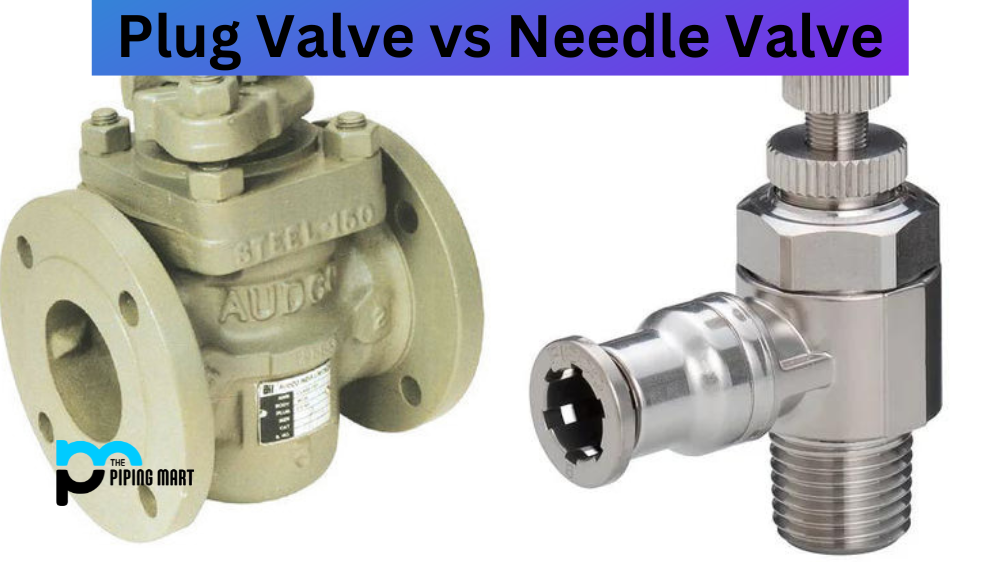Valves are widely used in the energy industry to regulate fluid or gas flow. Different valves are designed to meet specific requirements like flow rate, pressure, and temperature. Among the most common valves are plug valves and needle valves. Both have unique features that make them ideal for specific applications. In this blog post, we’ll compare plug and needle valves to help you decide which is better for your needs.
What is Plug Valve?
A plug valve is a simple valve that consists of a rotatable plug and a body. The plug has a passage through it that can be linked to the inlet and outlet ports of the body. When the pin is rotated 90 degrees, it closes the port, halting or regulating fluid or gas flow. Plug valves are appropriate for high-pressure applications and slurries since they have little friction and a fast opening and closing rate. Additionally, they may be completely opened or closed, allowing for total flow control. Plug valves come in two varieties: lubricated and non-lubricated. Non-lubricated plug valves are generally utilized in slurry lines since they do not require lubrication. On the other hand, Lubricated plug valves provide enhanced sealing capabilities and are employed for high-pressure applications.
What is Needle Valve?
Needle valves feature a small, needle-shaped plunger that slides through the valve seat to regulate fluid flow. The plunger is cone-shaped, with the narrow end connected to a stem rotated by a handle or knob. Needle valves are commonly used in low-flow applications because they provide accurate flow regulation and control. Needle valves may be opened or shut more slowly than plug valves, ideal for precise flow rate control. However, needle valves aren’t appropriate for high-pressure applications or slurries. They’re most effective in low-pressure applications like air, water, and oil.
Difference Between Plug Valve and Needle Valve
Applications
Plug valves are ideal for high-pressure applications that require a higher flow rate or that transport slurries. Because of their ease of operation and quick open and closed speed are widely used in oil and gas drilling, refining, and transportation. Lubricated plug valves are helpful in high-temperature and high-pressure applications because they enhance sealing capabilities.
Needle valves are used in low-pressure applications where precise flow control is required to achieve accurate measurements. They’re widely utilized in the manufacturing industry to regulate the flow of a specific fluid or gas in a particular process.
Maintenance
Plug valves have several components, including the body, plug, stem, and gland. Lubricated plug valves require regular maintenance to ensure that the valve operates correctly. The lubricant must be changed regularly, and the valve should be re-lubricated if it is stiff. Non-lubricated plug valves are low-maintenance alternatives to lubricated ones, as they have fewer components and require less maintenance overall.
Needle valves, on the other hand, are low maintenance. The needle and the valve seat should be regularly cleaned to ensure they don’t become clogged, but needle valves require little maintenance.
Operation
Plug valves are operated by turning a handle or lever, which raises or lowers the plug, opening or closing the fluid flow. Needle valves are used by turning a knob or wheel, which moves the needle up or down, opening or closing the fluid flow.
Construction
Plug valves typically have a body made of metal or plastic, with a plug also made of metal or plastic. The pin has one or more ports allowing fluid to flow through when the valve opens. Needle valves typically have a body made of metal, with a needle also made of metal. The hand has one or more ports allowing fluid to flow through when the valve opens.
Advantages
Plug valves have several advantages over needle valves. They are less likely to leak, easier to operate, and require less maintenance. Additionally, plug valves can be used for both on/off and throttling applications, while needle valves can only be used for throttling applications.
Disadvantages
Needle valves have several advantages over plug valves. They are more precise, have a higher flow rate, and can be used in limited-space applications. Additionally, needle valves are less likely to become stuck in the open or closed position than plug valves.
Conclusion
In conclusion, plug and needle valves regulate fluid or gas flow. The application’s specific requirements will determine which valve to use. Plug valves are ideal for high-pressure applications that require rapid opening and closing operations or slurry transport. On the other hand, needle valves are excellent for low-pressure applications that need precise flow rate control. Consider application and maintenance requirements when choosing between the two valve types to find the best option.




